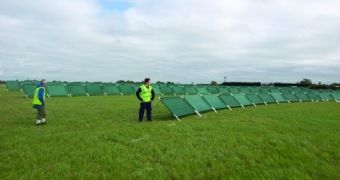Scientists working with the Engineering and Physical Sciences Research Council now claim that airport pollution might one day be successfully dealt with with the help of so-called “virtual chimney” fences.
As several studies have shown, those living fairly close to major airports more often than not risk having their health negatively affected by the harmful emissions which get released by aircraft as they prepare to take off or as they land.
This is because these emissions do not simply stay within the airport's perimeter, meaning that they get carried away by wind currents and eventually end up in the air people breathe.
The “virtual chimney” technology that scientists are now looking to perfect basically revolves around having “blast” fences (i.e. baffles, as the researchers refer to them) installed close to airports.
These innovative fences could help better channel the emissions, forcing them to disperse both more effectively, and in a more public health-friendly manner.
“An array of baffles makes the surface rough in an aerodynamic sense. This sucks the momentum out of the exhaust jet, allowing its natural buoyancy to come into play. By suitably angling the baffles, we can also give the exhaust an upwards push, encouraging it to rise away from the ground,” commented with respect to this technology Dr Mike Bennett.
Furthermore, “Although the exhaust will still disperse to the ground eventually, it will do so at a lower concentration. We might hope to see a reduction in surface concentrations of around 50 per cent at the perimeter fence behind the place where aircraft are taking off.”
Interestingly enough, the scientists working on perfecting these “virtual chimney” fences claim that the latter are also effective in terms of cutting down on the amounts of noise pollution typically caused by airports.
Up until now, the baffles have been tested by specialists working with the Manchester Metropolitan University, the Cranfield University, the University of Southampton and the University of Cambridge.
Should things go as planned, airports worldwide might start using them in just two-three years' time.

 14 DAY TRIAL //
14 DAY TRIAL //